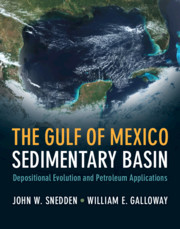Book contents
- The Gulf of Mexico Sedimentary Basin
- The Gulf of Mexico Sedimentary Basin
- Copyright page
- Dedication
- Contents
- Preface
- Abbreviations
- Part I Introduction
- Part II Mesozoic Depositional Evolution
- Part III Cenozoic Depositional Evolution
- Part IV Petroleum Habitat
- Chapter 9 GoM Petroleum Habitat
- Glossary
- References
- Index
Chapter 9 - GoM Petroleum Habitat
from Part IV - Petroleum Habitat
Published online by Cambridge University Press: 13 September 2019
- The Gulf of Mexico Sedimentary Basin
- The Gulf of Mexico Sedimentary Basin
- Copyright page
- Dedication
- Contents
- Preface
- Abbreviations
- Part I Introduction
- Part II Mesozoic Depositional Evolution
- Part III Cenozoic Depositional Evolution
- Part IV Petroleum Habitat
- Chapter 9 GoM Petroleum Habitat
- Glossary
- References
- Index
Summary
The Gulf of Mexico petroleum habitat is broad and diverse, with virtually every depositional unit or supersequence producing hydrocarbons onshore or offshore in the USA, Mexico, or Cuba. Oil and gas fields and undiscovered resources follow a concentric trend, with Mesozoic hydrocarbons resources surrounding the prolific Cenozoic basin center. The most recent and expected future discoveries are in the deepwater subsalt domain of the USA and Mexico, though a potential pre-salt frontier remains to be tested. Characterization of emerging (deepwater Tuscaloosa and Norphlet), existing (deepwater Wilcox), and mature (Plio-Pleistocene minibasin) conventional exploration plays yields new insights but also important exploration lessons, such as the Perdido fold belt BAHA wells, which ultimately set-up deepwater Wilcox exploration in the Gulf of Mexico, with large discoveries as recently as 2017. Unconventional onshore plays are well-established (Eagle Ford), emerging (Agua Nueva), or technically challenged (Tuscaloosa Marine Shale). The seismic technology evolution that underpins current success in the subsalt of the US sector will undoubtedly impact new exploration in the Campeche salt province of Mexico.
Keywords
- Type
- Chapter
- Information
- The Gulf of Mexico Sedimentary BasinDepositional Evolution and Petroleum Applications, pp. 248 - 291Publisher: Cambridge University PressPrint publication year: 2019
- 1
- Cited by



